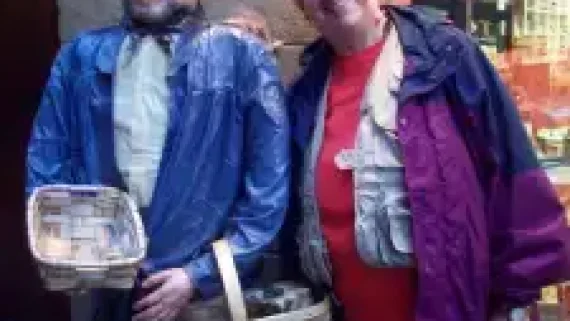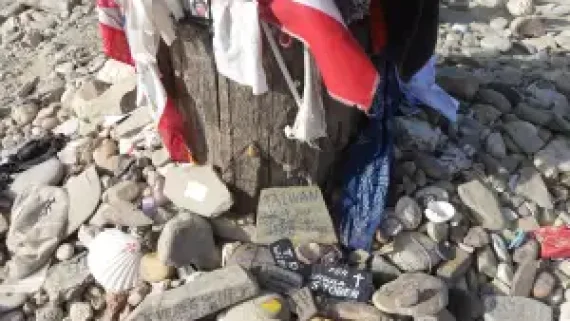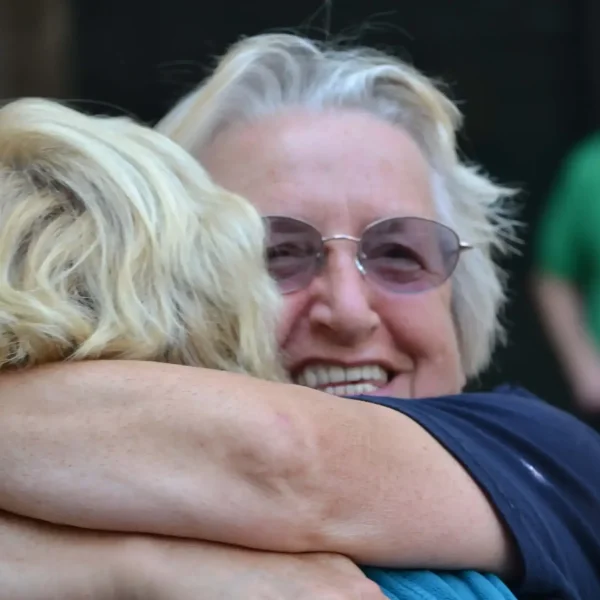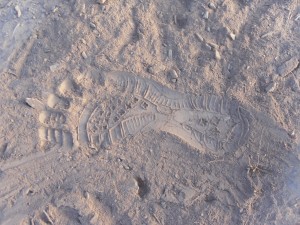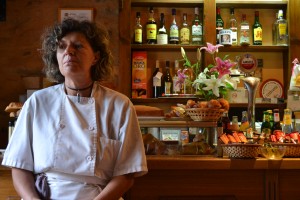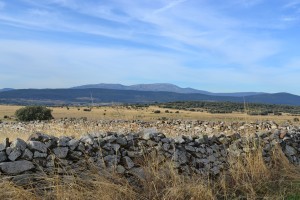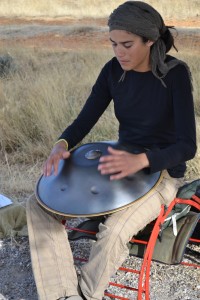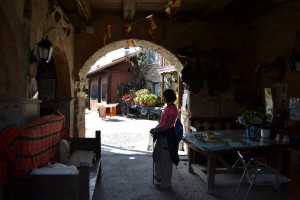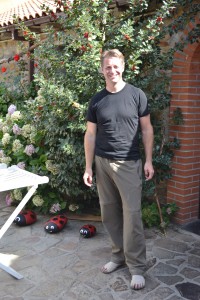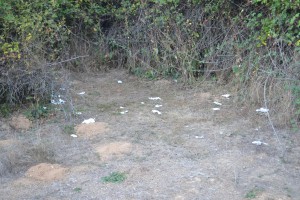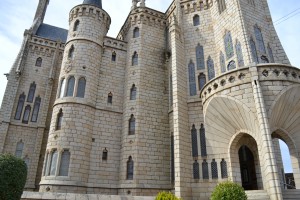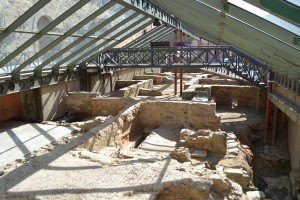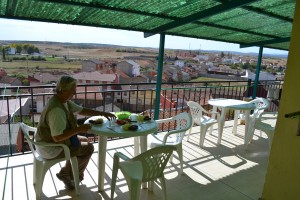Monthly Archives: October 2011
How Did the Camino Change Me?
Must be fair about food….
Good bye Spain and Hello to Portugal
Video of Mom at the Cathedral of Santiago
Casanova Mato, Arzua, Pedrouzo, and Santiago
Cathedral, St James and Certificate
Last kilometers into Santiago
Just When You Thought It Was Over: Portugal
The End of This Way
Next to Last Day: Arzúa to Pedrouzo
Notes from Kilometer 18, Give or Take
Leaving Mercadoiro; Rene the Eagle
Inge – Rabanal to Mercadoiro and the Iron Cross
Sarria to Mercadoiro to Ventas de Naron
El Acebo to Ponferrada: More Jamón and What I Miss
High Up in El Acebo, We Are Served a Human Heart
Mom at the Cruz de Fierro
The Cross of Chemo
Mom Approaches El Cruz de Ferro — the Iron Cross of Letting Go
Mom: Navarette, Azofra, Santo Domingo, Belorado, Burgos, Leon, El Acebo, Astorga
“I Want to Go to that Cross and Leave My Cancer Behind”
The Energy Meridians of Mother Earth
I had heard people say that the Camino runs along on one of earth’s energy meridians, also called ley lines. I’d heard that in pre-Roman times, people of the Pagan religions, and, later, Christian mystics, walked the Camino route from Santiago to Leon, and which in its entirety, as it covers seven sacred sites corresponding to the seven chakras of the human body, is called the Celtic Camino.
The ley lines of the earth are said to correspond to the energy meridians of the human body, as in Chinese medicine. Throughout the world, indigenous peoples have viewed the earth as a holographic representation of the human form. The great travel writer Bruce Chatwin described the connection between the Australian Aboriginal people and the land they walked, and sang out loud — in a wonderful book called The Songlines. Lucien Lévy-Bruhl, speaking of the Aborigines, said “The land is a living book in which the myths are inscribed . . . A legend is captured in the very outlines of the landscape.”
The Camino is also said to perfectly parallel the Milky Way, and some people believe that by following a path so powerfully charged with energy, a person is more likely to have intensely spiritual or religious experiences. One etymology of the name “Compostela” argues that it comes from Latin campus stellae, “field of the stars”.
Does this refer to the Milky Way, or to the belief that the bones of St. James made their way to Santiago from Israel (in a boat, in seven days) and were found when a shepherd spotted a star and somehow deduced that the star, billions of light years away, hung in the sky over a specific spot — the spot where the bones were interred and where the cathedral of Santiago de Compostela now stands? If you are able to replicate this feat at home, please leave a comment in the Comments section.*
I picture a line of druids solemnly walking the same path, oak staffs in hand, white-haired and regal like Gandalf in “The Lord of the Rings”, to Finisterre, literally “end of land”, or what was then believed to be the end of the known world. But the Celtic Camino actually runs from west to east and back again: it stretches from Santiago – its start, in the first chakra – to Leon, Spain and Toulouse, France, and finally to Rosslyn, Scotland. Even today, some people walk this route, which has them walking against the current of the Camino de Santiago pilgrims.
Some people believe that the tomb that allegedly contains St. James’ bones (again, a dubious claim) does not, in fact, house the remains of Saint James, but of a pagan priestess, and that the Catholic Church, as it so often did with Pagan churches, symbolism (e.g., the fish symbol, Christmas in place of the winter solstice, the god-man born of a virgin and a god) and rituals, took advantage of the pre-existing meaning assigned to the Camino to spread Christianity as far and wide as possible. Yet another theory holds that if there are any remains on the spot, they belong to Priscillian, an ascetic from Avila who was beheaded by the Church as a heretic in Treves, France, in 385 CE, but who was venerated as a martyr in Galicia and other parts of northern Spain.
Here’s what I found on a website discussing the matter of energy:
As we walk and travel along this sacred path, we offer a healing to heal the split for Mother Earth, as we simultaneously heal our own split. We walk up Her chakras, and as we do, we offer our healing, our light and love to ourselves, and to the Earth along this powerful meridian of energy.
And this author quotes another, one Peter Dawkins, who says:
A true pilgrim who pilgrimages in love leaves footprints of light. Many pilgrims leave many such footprints, and a well-walked pilgrims’ way can become a path of light. There are multitudes of pilgrimage routes crossing the earth, with thousands of people pilgrimaging them every year.
On the other hand, “Some of these meridians are polluted with . . . negative vibrational toxins such as battles, massacres, and the like. These vibrations are stored in the records of the land itself” – much as illness may be viewed as the storage of negative emotional energy – “reflecting back to its inhabitants and causing serious illness . . .”
If the history of the Camino tells us anything, it is that war was nearly continuous along it. Christians fought Christians, Moors and Saracens fought Christians, Christians persecuted Jews, and so on, ad nauseam. For most of the history of Spain, these wars were more about land and strategic advantage than religion. The Camino runs through an energetic wasteland of battles and massacres.
“Fortunately,” according to the same source, “these currents respond positively to spiritual impression.” And here we come back to the pilgrims, who walk it with prayers, mantras, and good faith in their hearts and minds. Once again, a practice that was originally Pagan has been superseded by Christian symbolism. Instead of walking along one of the great planet’s lines of energy, pilgrims redefined their seeking in a new narrative, a new storyline: We are seeking the legendary bones of St. James the Apostle.
The Human Scale
Mom said she’s been visualizing the energy blasting through her tumor. I’ve been told by more than a few people that my energy is palpable and can be felt in whatever part of a person’s body I direct it. I don’t know what to think of this, but I make a Cartesian wager when I place my hand on Mom’s lower back and visualize blocked energy getting unblocked, or see light and love flowing into her: there’s no penalty for being wrong, but what if it works?
Like the Catholics who would come later, Pagans often placed altars and other symbolism on the tops of mountains. Thus was the current site of the Cruz de Ferro, the Iron Cross, originally the site of a Pagan monument. It sits on the highest (or second-highest) point on the Camino.
The Cruz de Ferro, by tradition, is the place where pilgrims leave something behind. The place where they agree to let go of something. For months now, Mom has said, “I’m going to leave my cancer behind!” She has duly brought a stone, from home, and a paper copy of her PET scan with the third and last tumor circled in red.
And all of this has me worried.
* Another etymology is compositum, “the well founded”, or composita tella, meaning “burial ground”.
Astorga to Rabanal
Astorga to Rabanal del Camino, 22km.
Friday, October 7, 2011. I thought I’d have a solid night’s sleep, but I didn’t get to sleep until nearly 11, and between Mom’s snoring, Barbara’s (according to Mom), and apparently my own (per Carrie), the morning hours came far too quickly. Mom got up far earlier than we did, as is her wont, and went to the kitchen to make some German-style potatoes. She found the kitchen a disaster from the pilgrim revels of the night before (Mom thought “guitar-playing and drumming” would be too charitable, but there was strumming and banging involved). The kitchen was the classic tragedy of the commons, but, Mom being Mom, she cleaned it.
We were on the road at about 7:40a.m. It was cool, cool enough for two layers of Icebreaker wool. Unlike in days past, when, after 30 or 60 minutes I’d take off the top layer, I wore both layers the whole 22 kilometers. In fact, after my hands stopped functioning in any way but to hold my poles, I added gloves. And my five-toed socks. My nose ran the entire way, ran so hard and fast I feared it might reach Santiago without me.
Mom was pleased with the new Salomon trekking shoes she had bought yesterday. “Oh,” she
said. “I’m going to sleep in these!” For the first time since we began the Camino, she walked an entire stage in one pair of footwear, and did not resort to her sandals.
Even before we’d left Astorga, we came upon a wonderful aroma of fennel. It was like walking through a licorice factory. The blue of the dawning sky was beyond description. The power lines sizzled and buzzed overhead – something I’ve heard only in Spain. In Murias de Rechivaldo, we stopped for Second Breakfast at a small but cozy café run by a woman named Pilar. She addressed me as “senor,” and the bathrooms, to Mom’s delight, had both towels and soap, a rarity on the Road. (As long as I’m wearing wicking wool, I find towels unnecessary). These things would earn her a larger tip.
Pilar was playing Tibetan mantras on the stereo. “For patience,” she said, pronouncing it “pot-ience”. “And for compassion.”
“There isn’t enough of that along the Road,” Mom said. Pilar agreed. They discussed Pilar’s liver problems, and her efforts to remain positive, and they shared tips on alternative medicine. Pilar said that good food had changed her life and her health — notably, she no longer ate jamon. Meanwhile, I talked with a Galician who has lived in Alberta for many years, his Canadian partner, and an Italian woman from Bologna.
The countryside between Astorga and Rabanal is sparsely populated. As the earth’s population climbs, I hope that people, especially those in China and India, will keep Spain in mind. The semi-arid terrain reminded me of the land in and around the Great Basin of the western United States: yellow grasses, light-green shrubs, heather, broom, wild
thyme, desert flowers, and a few types of dominant trees, none of them very tall, such as scrub oak. In the distance I saw a few copses of aspens.
It should have been no surprise to see a sign, in El Ganso, advertising a Cowboy Museum. (I couldn’t do it. Not after the chocolate museum). The soil was now red, too, reminding me that Colorado got its name from the Spanish – color red, color rado (red is now rojo in Spanish, but their explorers swept through the Colorado territory centuries ago).
We stopped for First Lunch in El Ganso and I took some notes and checked my email. Mom fed stray cats bread with butter – “Have you noticed they only eat it if it has butter on it?” – and the cats all ended up standing on my feet because she was throwing the crusts between them.
For the first time since before Burgos – that is, since far on the other side of the plains of Castilla and Leon – we saw walls made of stone. Some were in the fields, too large to have been a house, too small to enclose an entire property. I decided they must have been corrals for sheep and cows. The villages, too, were made of stone. Roofs were made of mined slate or even thatch. In the distance, hills, the ridgelines of which were covered with modern windmills too large for Don Quixote to tilt at.
We came upon a tree under which a young man in long curly hair had set up a table. He had been to Santiago and was now making his way back . . . to somewhere. For a donation, he was offering coffee, chai, hummus, and cake. Nearby, and much more alluringly, a slender, raven-haired woman played a haunting flying-saucer-like
instrument called a hang. Invented by a Swiss, it had small dimples spaced around its perimeter, and by tapping the places in between, she caused it to make different notes. The sound wasn’t too unlike the music played by the alien ship in “Close Encounters of the Third Kind”. Hank, a young Dutchman, tried his hand at it, too. I bought one of the woman’s CDs, and we moved on.
Hank and I walked for a while. He told me about a man who was on the Camino with his daughter’s ashes, and who was walking an astonishing 75 kilometers per day.
He told me he himself was on the Camino to prove, as he put it, “that I can finish something.” Shin splints had resulted in his early departure from the army, and his confidence had suffered.
“You thought something was wrong with you?” I said. “You worried that it wasn’t just the injury but that you were weak?”
“Something just like that,” he said. He was now traveling the world for a year, and filming his exploits. He said he wanted to learn how to meditate, and for about an hour I talked to him about it. Hank is probably the first person I’ve ever heard say, of English, “I love the language.”
“Why?”
“It’s just so easy and smooth. Dutch is like German, they both sound so harsh.”
“To my ear,” I said, “Dutch sounds a little like German, but also a little like English, so in the end it sounds like the kind of language I would make up, if I were going to make up a language that sounded like complete nonsense.”
Rabanal
The albergue in Rabanal was utterly charming. Stone walls, wooden beams, an outdoor bar and patio, flowers and flowering bushes scattered about. There’s even a mistletoe tree, about twelve feet tall. I thought mistletoe grew only at Christmas, and near doorways. The proprietress didn’t speak a lick of English, or anything other than Spanish, but she was all smiles, as was her mother, who must have been in her eighties. The daughter, who was in her late fifties, walked through the dorm and would cry Hola!, and Mom and I answered a few times, until we realized that she was playing peek-a-boo with pilgrims sitting outside the windows.
Once I’d dropped my pack I headed to the restroom. The light switch was not in the same room as the toilet stall. That should have been my first warning. Sure enough, after a few minutes of contemplation, I was cast into darkness. This saves on electricity, but it necessitates the use of more paper. I need to research how the Spanish are apparently able to do their business so quickly. Is it all the oil in their diet?
Mom sat down at a table next to Barbara, the Bavarian woman, and Rainer, from
Cologne. He’d had a hard day of walking, he said, after having had too much of a local spirit. Rainer said he was on the Camino because he’d had a rough two to three years, and he wanted to stop thinking about all his problems.
“Is it working?” I asked. He shrugged.
Barbara had beaten cancer four years earlier. She initially wanted to walk the Camino in order to spend some time by herself, but now, she said, she was feeling dankbarkeit, thankfulness or gratitude, for her life. While away from her normal life, she realized how good she had it. She had been married 26 years and she and her husband still felt about one another as they had when they met. She had wonderful daughters. She wanted everything, she said, to stay just the same. There, I thought, was a dangerous thought to attach oneself to.
Atop the iglesias in Rabanal, the little churches, were more storks’ nests. One of them, inside, was crumbling and rustic — perfect. We went there for a Vespers mass, blessedly short, and attempted, in Latin, that odd reading/singing-without-a-clear-melody that Catholics are somehow able to do, perhaps right out of the womb. We read a Psalm about the Lord crushing our enemies, and then we read from Romans about always doing things to please our neighbors.
“You did that really well,” Mom said to me. “Like you’ve done it before. But that priest was not going to let you be lead singer, no way.”
As we exited the church, another group of worshippers was waiting outside. Two women looked at my footwear aghast, as if I’d just walked across the face of the Lord, stopped, backed up, and wiped my feet. Soon the whole group had turned to watch me walking away, for all I know clutching their rosaries and crossing themselves. It’s this sort of thing that could make even a sociopath self-conscious.
Across a narrow road from a hotel that had wi-fi, I sat down with my computer in the cold. Vodafone charges me by the gigabyte, so when I want to upload pictures to Facebook or the blog, I use free wi-fi. A cat sat across the road from me, near the door of the restaurant. We exchanged a knowing glance, we two scavengers.
Morning in Rabanal del Camino: An Ode to My Fellow Pilgrims
It must have gotten into the 30s last night. Even with a blanket and two layers of clothes, I was cold. There was very little snoring, at least that I heard. I call this a miracle, and credit St. James himself. Mom said Rainer was sawing away because he’d drunk two bottles of wine the night before. In the morning he was nursing both a café con leche, from the bar and, in his left hand, a Coke. He said he felt awful and didn’t know why.
“Alcohol?” I said.
“Could be,” he said.
Although we’re no longer at risk of walking in hot weather, at this altitude and with current weather reports, pilgrims continue to insist on going to bed before 10 and getting up before 7a.m. to begin walking. And thus begins the second movement of each night’s Orchestral Maneuvers in the Dark (shout out to Yuka for the 80s reference). At first, one tentative soul glides around, quiet as can be. He is soon joined by another pilgrim or two. There is rustling, but it’s tentative.
But then the broken-window phenomenon sets in. With each new person, and each new noise, comes more permission for the next person to be louder. Soon the rustling turns into a manic stuffing, and then a loud zipping, and sotto voce voices turn into whispers fit for artillerymen, and eventually, no matter how many bleary-eyed people are still enclosed in sleeping bags, pilgrims are now calling out to one another, stomping about, slamming
doors. It’s truly amazing that these are the same seemingly normal, well-adjusted people we have met the night before. Then again, once on the trail, some of them will also be unable to bury, or even to lift a rock to cover up, their used toilet paper.
I’m used to a wilderness ethic, at least in America, that says you pack out whatever you bring in. In true wilderness areas, that even includes your own waste. That’s what plastic bags are for. The Camino, by contrast, needs either to educate pilgrims better or to provide trash cans. Pilgrims disrespect their fellows, the locals, and the environment with their trash.
Tomorrow, we will finally reach the Cruz de Ferro, the highest point on the Camino and, by tradition, the place where pilgrims leave something behind — where they let go of something. It is probably the most important part of the Camino for Mom. “I’m going to leave my cancer there,” she said, a few months ago. But will she? And isn’t the hope itself dangerous?
León to Astorga, City of Chocolate
León to Astorga
To give Mom’s toe more time to heal, and because walking from León to Santiago would
have required an aggressive 18 kilometers a day, every day, for 12 days, we took a short bus ride from Burgos to Astorga. Astorga is a pleasant little town. Marie Anne had recommended that we be sure to stop here. There is an embarrassing wealth of cathedrals and churches for such a small town, and a Museum of Chocolate, which Carrie was determined to see. The old town in which we’re staying sits on a bluff overlooking the surrounding countryside.
Legend has it that both Santiago and St. Paul preached in Astorga. Both legends seem to me unlikely, but the city did merit a bishopric of its own. Because it’s at the foot of two very steep climbs, it became a place on the Camino for travelers to rest up before the next ascent. As a result, there were once more hostels here than anywhere but Burgos.
Astorga was originally a Celtic settlement and in 14 BCE became a Roman stronghold in what was known as Asturica. Still visible today are the ruins of a sumptuous private home, complete with baths (featuring, as in the baths I’ve seen in Israel, hot, cold, and
even tepid water), and the town’s walls. Plinius called the city urbs magnifica, “magnificent city”, but most of what the Romans built was destroyed when the Visigoth Teodorico II defeated the Suevi tribe that had settled the area after the fall of Rome. The Moors later destroyed the Visigothic city. After the campaigns of Alfonso I of Asturias (739-757) against the Moors, the city was abandoned until the 11th century, when it became a major stop on the Camino. The city was unusually welcoming to its Jewish residents until 1492, when all Jews were either forcibly converted, killed, or expelled from Spain.
Astorga has a fine cathedral, to judge from the outside. But both times we arrived it was
closed, so we’ll never know what’s inside. It might have held the Holy Grail, or a BMW Z8. We ran into the same problem at the neo-Gothic, fairytale Bishop’s Palace designed by the great and whimsical Antonio Gaudi.
Happily, in Astorga there is a fine little albergue. The owners or managers are a Spanish couple, and the volunteer hospitalerosare German, this time a couple from a town near Koblenz. Mom was utterly delighted with the kitchen, which led to a patio with a view for
many miles, and she could not have been happier about immediately going shopping and making lunch – German-style hamburger patties with onions and German potato salad, along with white asparagus, raw red peppers, banana slices, and grapes.
We got a room with a view – and the room holds only four people, the fourth being Barbara, a woman of a certain age from near Munich, whose daughter was once a satisfied exchange student in Iowa. She has that Bavarian accent that reminds me of my relatives, and childhood, in Bavaria. Barbara’s crown has broken, so she is off to see a dentist. Curiously, this happened to another pilgrim just a few days ago.
I’m tired today. I didn’t get much sleep last night. At least one man, and maybe two, sounded like nothing so much as a motorcycle starting up. I am becoming an aficionado of snoring sounds. It’s like Nabokov, collecting and documenting butterflies, only with more rage. Truly, hostels need to provide those little anti-snore strips and require that snorers use them. It should also be made kosher for other pilgrims to wake a snorer without a strip and ask him to get one or to banish himself from the albergue, if not from society entirely.
I am looking forward to a greater probability of a full night’s sleep. It would depress me beyond measure for Barbara’s crown, say, to get broken again.
Counting another bus trip, we’ll have about 169 kilometers to go, out of the original 800+. If we budget 11 days (we leave from Lisbon on October 22, but wanted to spend some time in Portugal), then we need to cover 15.4 kilometers per day. That’s easily doable, if we can avoid injuries and other health issues. Apparently one must cover the last 100 kilometers to get the special badge of the pilgrim. Or maybe it’s an embossed certificate from the Pope, along with an accounting of the sins remitted (and how does he know? But then, Santa Claus knows, so why can’t the Pope know?) Julio told us that in Santiago, the townsfolk offer to host pilgrims in their own homes, and that there is some kind of ceremony at the cathedral where the pilgrims’ names are called out publicly.
XOCOLATL
One proud native informed us that Astorga was the site of the first manufacture of chocolate in Europe. (He also said the first shop was in Aachen, Germany). I wasn’t able to confirm this with Google, and the Museo de Chocolate, for which we had high hopes, was of no help. The museum appears to have been carved out of the living quarters of someone’s home, and it offers less an education in things chocolate than a collection of old chocolate-making tools. But its curators’ primary interest seems to have been Spanish-language chocolate advertising in the late 19th and early 20th centuries. Somewhere in the world, a Ph.D. student with an esoteric thesis will be very happy someday.
The Spanish were the first to bring chocolate to the Old World, and like so much else, they got it from the Aztecs. Montezuma drank the stuff eight times a day, and believed it was the key to good health. When Hernán Cortés, the conquistador who destroyed Aztec civilization, broke into Montezuma’s palace, in 1591, to rob his treasury of its gold and silver, he was astonished to find only a truck-load of cocoa beans. Cortés brought Xocolatl! to Spain, where the bitter stuff was made more palatable to European tastes by mixing the ground roasted beans with sugar and vanilla. When more and more sugar was added, it became edible to Americans.
León, Our Favorite Hospitalero, and a Brilliant Cathedral
Catching Up: Logroño and Navarette
Logroño
Checking into the municipal albergue is now old hat. The one in Logroño was staffed with more unfriendly, unsmiling volunteers who speak a rapid Spanish that none of us can follow. What it boils down to is, we need to show our credentials and show our passport, then take a shower and come back to pay. We received throw-away sheets and pillowcases, which is what some albergues do now. We had arrived so quickly that we didn’t know what to do with ourselves. The 9 kilometers were so easy, but I was still tired. We tried to find a notary for Cameron and a grocery store.
This albergue has a nice big kitchen, but the two stoves have been removed and only a slow microwave exists. We bought veggies and salad (tomatoes, cucumbers, cheese, and chorizo, and bread, of course). I haven’t eaten so many carbs in a long time. But there’s absolutely no choice. I wonder if the veggies are sprayed. I am so far off my diet, I don’t even see it anymore. My energy level is down, and I would even consider eating meat just to get something of substance into my stomach. I bought two large, lovely red peppers to eat on the way in case there were only the uncovered mayo tuna tapas.
The guys took off to do business, and Marie Anne and I went to a café in the square. We were people-watching while we had our café con leche and mousse. It’s a lovely afternoon and people are busy going to and fro. Most of them are very nicely dressed. The more mature women as well. Their hair is coiffed, clothes match, nice shoes. We don’t see many overweight people. There was a beautiful cathedral with an ornate façade.
After washing our clothes and arranging the service to take Quasimodo to the next village in the morning (who has been replaced by a fat-baby daypack). We had another salad for dinner, and I went to bed to read for a while. There are three dormitories and probably 36 people in each. There were only two toilets and two showers for women, and as many for men. Toilet paper is a rarity, and one had better bring one’s own or be caught with one’s pants down. I hear people speak Spanish and laugh, some in broken English, and finally lights are out, and all is quiet . . . until midnight.
The snoring concert begins, and it’s awful. I went to the bathroom and then tried to go back to sleep. The Irish guy who was up a little while ago, tending to his injured foot, is now talking in his sleep. At two o’clock I’m still awake, and all four snorers are snoring at the same time. Nothing helps. I even contemplated dragging my mattress into the kitchen.
Even though I had only 13 or so kilometers to hike the next day, it’s a lot when you’re tired.
The flax (which I call “my dirt”) started to work, so I was up again. Finally, I took ibuprofen, and slept one-and-a-half hours before the plastic rustling began. I tried to go to the bathroom first, so I could take care of my dental issues. I snuck back to my bunk and retrieved coffee. There was not a pot to heat water.
A young Spanish man pantomimed that I should place a glass of water into the microwave. “Ahh,” I said. “Good idea.”
And then I decided to take my flax in the mornings, because I believe it will work much better, and won’t give me so many colon issues.
Logroño to Navarette
Marie Anne, Carrie, and I left Logroño while it was still cool so we could arrive before the hot noon sun caught us. Cameron and Julio were once again dealing with the notary. We made decent progress, and only stopped several kilometers out of town. The landscape changed back to being hilly, with lots of vineyards. We stopped at a bar, luckily open, and had our morning café con leche. I had to take of two blisters on my right foot. It was a beautiful spot by a pond, surrounded by green hills.
Then we started again and the Camino ran along the highway, divided by a chain-link fence. Every link had a hand-made cross in it, some made of wood, others of plastic bottles. I fashioned one from yellow flowers and placed it there as well. I remembered my visit to Oklahoma City, where people had done the same thing. I tried to explain that the bombing had hit the sangre de couer of the people of Oklahoma City, and she understood.
I was thinking as we were walking about the ancient pilgrims, and their hardships. How they were often robbed, and if they didn’t have enough, they might be beaten and thrown into the river. So in spite of all my issues, they were much worse off.
I was also having a food obsession: where to get it, what I would do with it, if they didn’t have what I wanted, what we’d do instead. Once that problem was taken care of, then came the bathroom obsession. Where to put it all, when there was not even a tree.
Everywhere the harvesting of grapes had begun. The weather was still perfect, and I’m sure they’re very happy to have such a great year.
Navarette
We arrived in Navarette early, and the albergue was still closed. We waited at a nearby café, where other pilgrims sat, and got sleep in the warm noon sun. Soon, we saw Cameron and Julio. Both made the 13 kilometer trek in 2 hours – a serious butt-kicking. “Cheesus Crise!” Julio said as he sat down. “Jour son is trying to keel me.”
We heard some music that sounded like from an ancient time. We hurried to check in, but there was no hurrying the process. And so we got another lesson in patience.
I had had two blisters between my toes, so the going was a bit tough. When we reached the square, situated right by the church, under some very old trees that shaded a stage, we saw children in elaborate, very starched white dresses with colorful flowers on them. They danced some old folk dances while throwing shy glances at their beaming parents. We were starving, but found out that everything was closed due to the fiesta to come. I would have thought that a priest or two would care for these hungry pilgrims. What are pilgrims to do on days like this? I had read about locals coming with water or food to greet the pilgrims. Well, I don’t know how long ago this was, but we sure haven’t seen anyone, except hungry feral cats. We did find a restaurant open and ate a fairly decent meal, but it cost 50 Euros. As Julio says, “the fleecing of the peregrinos”.
Carrie is catching a cold, and I hoped wasn’t getting worse. I can feel my throat tickle, and I groaned inwardly about yet another malady. We showered and changed, washed clothes, and arranged Quasimodo’s ride to the next town, since I really can’t carry mine with all these issues.
We wanted to visit the church, but due to the fiesta, it was closed. This is a smaller town, and rural, so I would imagine they would take their fiesta pretty seriously. During the fiesta, I had two bowls of the best soup ever!




